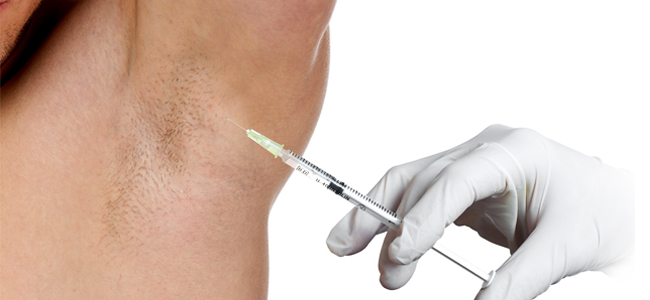 Hyperhidrosis is a common condition in which a person sweats excessively.
Hyperhidrosis is a common condition in which a person sweats excessively.
The sweating may affect the whole of your body, or it may only affect certain areas. Commonly affected areas include the:
- armpits
- palms of your hands
- soles of your feet
- face and chest
- groin
Both sides of the body are usually affected equally – for example, both feet or both hands.
Although the sweating doesn’t usually pose a serious threat to your health, but it can be embarrassing and distressing. It can also have a negative impact on your quality of life and may lead to feelings of depression and anxiety.
What is excessive sweating?
There are no guidelines to determine what “normal” sweating is, but if you feel you sweat too much and it has started to interfere with your everyday daily life, you may have hyperhidrosis.
For example, you may have hyperhidrosis if:
- you avoid physical contact, such as shaking hands, because you feel self-conscious about your sweating
- you don’t take part in activities, such as dancing or exercise, for fear they will make your sweating worse
- excessive sweating is interfering with your job – for example, you have difficulty holding tools or using a computer keyboard
- you’re having problems with normal daily activities, such as driving
- you’re spending a significant amount of time coping with sweating – for example, frequently showering and changing your clothes
- you become socially withdrawn and self-conscious
What causes hyperhidrosis?
In many cases, hyperhidrosis has no obvious cause and is thought to be the result of a problem with the part of the nervous system that controls sweating. This is known as primary hyperhidrosis.
Hyperhidrosis that does have an identifiable cause is known as secondary hyperhidrosis. This can have many different triggers, including:
- pregnancy or the menopause
- anxiety
- certain medications
- low blood sugar (hypoglycaemia)
- an overactive thyroid gland (hyperthyroidism)
- infections
Treatment for Hyperhidrosis
Botox is the commercial name of the toxin generated from botulism toxin. Hyperhidrosis means excessive sweating. In normal situations, a person sweats in order to regulate the temperature of the body. But in certain cases, it happens that the nerves which are responsible for controlling the sweat glands, become over-active, resulting in profuse sweating, which has a negative impact on the efficiency and self-confidence of a person.
Hyperhidrosis is caused due to overstimulated eccrine glands. Botox can be used for the treatment of excessive sweating or hyperhidrosis, especially in the case of armpits by blocking the chemical transmitters responsible for sweating. It is known to be very less useful in treating palmar hyperhidrosis in the palms and plantar hyperhidrosis in the foot to a small extent but the process is known to be painful. It is not FDA approved for treatment of palmar or plantar hyperhidrosis.
With Botox, it is possible to treat underarms, scalp and forehead, groin or any other area where profuse sweating is experienced. With a good injector, one can get safe and effective results
The treatment is done by administering the Botox shot for about 10-20 minutes in the target area.
Swelling may result from the shots and vanish in a few days.
The total effect of the treatment would be visible after 7-14 days of the treatment, though it begins to appear gradually within the first few days. The effect varies from person to person.
The impact of the injection lasts for about 6-12 months in which a person experiences reduced sweating. After this, the treatment can be repeated to have the same effects.
